What are soil mites? Soil mites are arthropods difficult to see with the naked eye. They can be white, brown, or another color. They’re generally harmless to people, although they can carry parasites, such as tapeworms. Soil mites won’t munch on your plants. In fact, they may even be beneficial.
You look at your plant and see tiny white bugs in soil. What could they be? Will they hurt your plant?
Some bugs are harmless or even beneficial, whereas others can devastate plants. In this article, I’ll help you identify what bugs you have, determine their threat level, and learn how to get rid of them if necessary.
Contents
Name That Bug
Here are a few things your uninvited guests could be:
Springtails
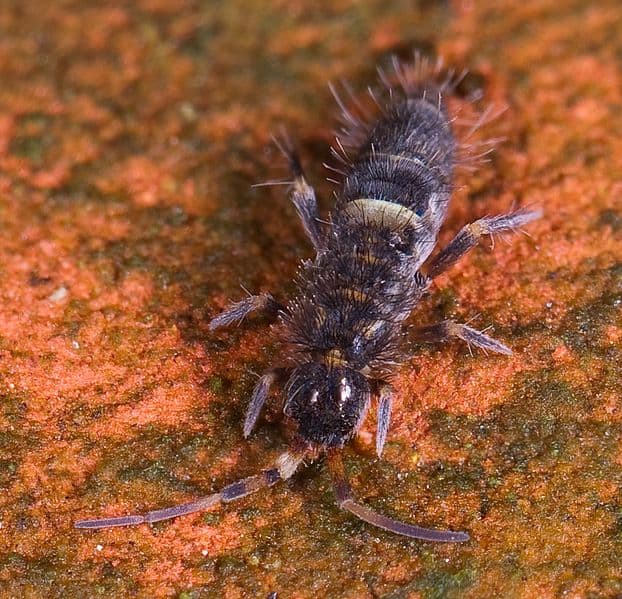
Springtails are nearly microscopic insects that jump high with their tails. Sometimes confused with fleas, they have softer, more elongated bodies. Springtails love potting soil that’s excessively damp or high in peat. But because they only consume algae, fungi, pollen, or decaying organic matter, they’re harmless to houseplants.
In fact, they benefit plants by improving the soil. Additionally, there’s evidence that they protect plants from harmful fungi.
Springtails also don’t bite or sting people, nor do they damage clothes or furniture. It would be fine to leave them be. If you want them gone, however, the best thing you can do is change your watering habits.
You’ll Need:
- Patience
Steps
- Let The Soil Dry Out
Simply let your plants’ potting mix almost dry out between waterings.
Mealybugs

Mealybugs are round, white bugs that secrete a furry-looking white substance to protect themselves from heat and moisture loss. The substance also repels water-based insecticide.
Mealybugs suck the sap out of indoor plants, which can weaken plants, stunt their growth, and eventually kill them. They also secrete a substance called honeydew, which attracts ants and can cause sooty mold growth.
Mealybugs like to hide on the undersides of leaves and tight spots where you might not notice them until you have a severe infestation.
Here’s how to get rid of mealybugs:
You’ll Need:
- An outdoor hose with a nozzle sprayer
- Insecticidal soap
Steps
- Isolate The Affected Plants
Immediately isolate the affected plants so the mealybugs can’t infest others. - Remove And Discard Affected Parts
If possible to do without killing the plant, remove and discard affected parts. - Hose Down The Plant
Take the affected plants outside and spray off the mealybugs with a hose spray nozzle. Repeat this step later if you see more mealybugs. - Apply Insecticidal Soap
If spraying your plant with water doesn’t work, you may have to use an insecticidal soap. Make sure the one you buy kills mealybugs. Carefully follow the instructions on the label, which may tell you to dilute it. According to WallyGro, insecticidal soap is more likely to harm your plants if it’s undiluted.
According to Clemson Cooperative Extension Home & Garden Information Center, insecticidal soap is “virtually non-toxic to animals” and can safely be used on food crops. - Prevent Future Infestations
The only ways to prevent mealybugs are to not put your plants outside during summer and to inspect all gardening items you bring inside. Look for white, cottony masses on leaves and stems, as well as in tight spots, such as stem crevices and leaf whorls.
Spider Mites

Spider mites — a type of arachnid — are difficult to see with the naked eye. According to Colorado State University Extension, “[t]heir colors range from red and brown to yellow and green.” They may look like moving red or white dots. The two-spotted spider mite is especially likely to target house plants.
The leaves of infested plants may look speckled, discolored, and/or scorched. You may also see webs. The mites cause damage by ingesting the plants’ sap and can kill plants if left unchecked. Fortunately, they don’t bite people or pets. Pretty in Green demonstrates the stages of an infestation:
Unfortunately, spider mites can be difficult to remove from houseplants. There are no biological controls and few chemicals that work against them. Treating all of your houseplants simultaneously, apply the below methods in one-to-two-week intervals until the bugs are gone.
You’ll Need:
- An outdoor hose with a nozzle sprayer
- Scissors to remove leaves
- A bag to discard leaves
Steps
- Discard Severely Affected Plants
If a plant is crawling with spider mites, it’s probably best to chuck it out.
- Remove Infested Leaves
Trim off heavily infested leaves, put them in a bag, and discard them.
- Spray Small Plants
Take affected plants outside and spray them with a hose nozzle sprayer.
- Wipe Leaves
Gently wipe the leaves of large plants with a damp cloth.
- Remove Webs
Remove webs whenever you see them. This may delay spider mites from laying eggs.
- Prevent Future Infestations
There are a few things you can do to prevent future spider mite infestations. First, inspect new plants before bringing them home and inspect old plants regularly to catch infestations early. Look for tiny moving dots; speckled, discolored, and/or scorched-looking leaves; and webs. If you go outside in a plant-heavy area, don’t enter your growing room (if you have one) until you’ve showered and changed your clothes.
Thrips
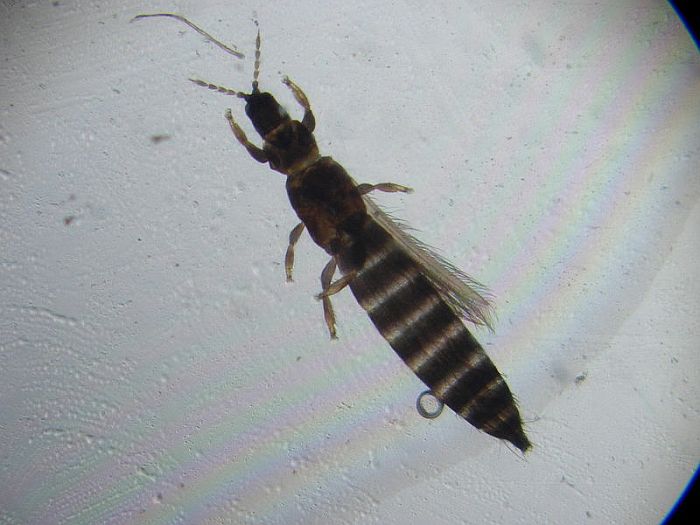
Thrips are tiny insects about 1-2 millimeters long. They can be white, yellow, black, or brown.
There are different types with different feeding habits — the ones that threaten your plants pierce plant cells and suck out their sap. They can also transmit potentially devastating plant diseases.
If your plants’ leaves have black droppings and silvery streaks or patches, you may have a thrip problem.
Here’s how to deal with thrips:
You’ll Need:
- An outdoor hose with a nozzle sprayer
- Pruning shears or scissors
Steps
- Discard Heavily Infested Plants
Unfortunately, thrip problems are difficult to deal with. If your plant is heavily infested, toss it out.
- Remove Infested Flowers And Buds
You may be able to save your plant if you remove infested flowers and buds.
- Rinse Your Plants’ Leaves
Take infested plants outside and rinse their leaves with water.
- Prevent Future Infestations
Inspect new plants before bringing them home. Then, inspect them frequently to catch infestations early. Look for slender little insects, black droppings, and silvery streaks or patches on leaves. Thrips may come out of a flower if you blow on it.
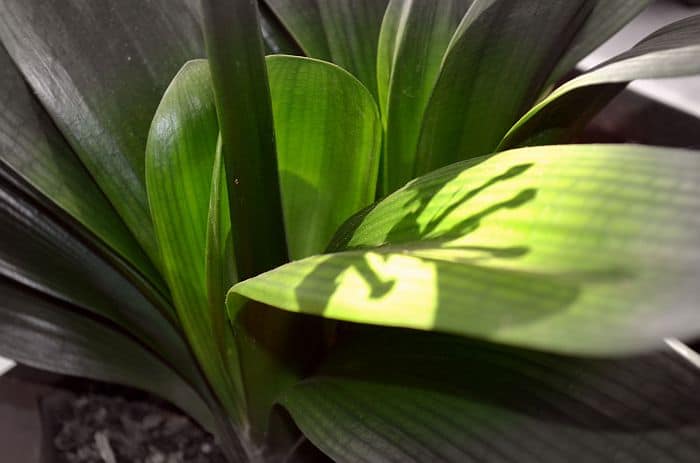
Whiteflies
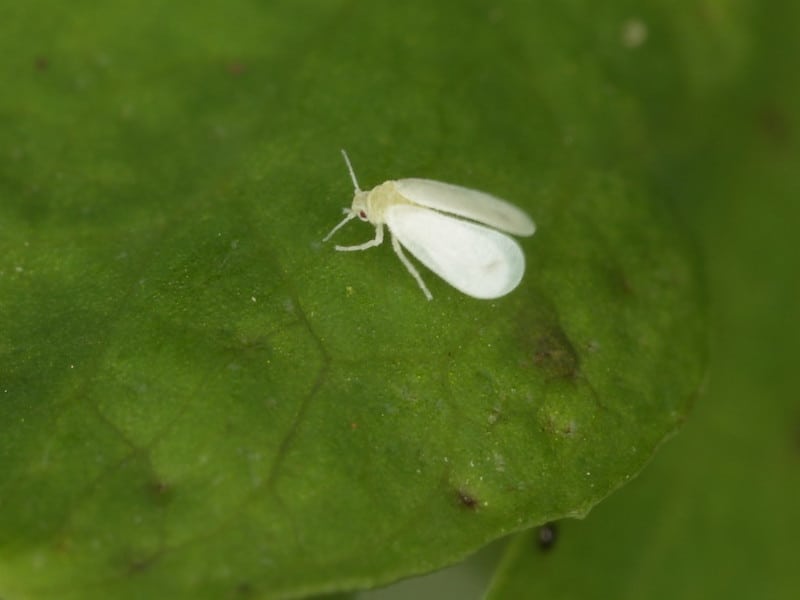
Whiteflies are tiny, white, moth-like bugs that injure plants by sucking out their sap. Like mealybugs, they also excrete a substance called honeydew, which encourages black sooty mold growth.
Severely infested plants may be stunted, look distorted, and have discolored leaves. Adults tend to fly away when disturbed, which can make it difficult to spray them.
Here’s how to handle a whitefly infestation:
You’ll Need:
- A moist cloth or sponge
- Insecticidal soap and/or another insecticide
Steps
- Discard Heavily Infested Plants
If a whitefly infestation gets out of control, discard the plant.
- Wash The Undersides Of Your Plants’ Leaves
Use a moist cloth or sponge to wash the undersides of your plants’ leaves.
- Apply Insecticidal Soap To Your Plant
University of Maryland’s Home & Garden Information Center says that for flowers (they probably mean flowering plants) or “other herbaceous plants,” you can spray the undersides of leaves with an insecticidal soap appropriate to the plant species. Both the plant and pest should be mentioned on the product label. Follow the directions carefully.
- Apply Another Insecticide
According to Iowa State University Extension and Outreach, the ability of insecticides to control whiteflies is “usually marginal at best.” If you want to give insecticide a shot, make sure it’s appropriate to use indoors, works against whiteflies, and won’t harm your plant. Carefully follow the directions on the label.
Choose insecticide carefully if you’ll be using it on food crops.
- Prevent Future Infestations
You can prevent whitefly infestations in a few ways. First, thoroughly inspect every new plant you consider buying. Check under leaves for gnat-sized, white, winged insects and their eggs/larvae. Also look for plant discoloration and other symptoms of poor health. At home, keep your new plant isolated for a while until you’re sure it’s healthy. If you see anything suspicious on it (like possible eggs or larvae) rinse it off with a hose.
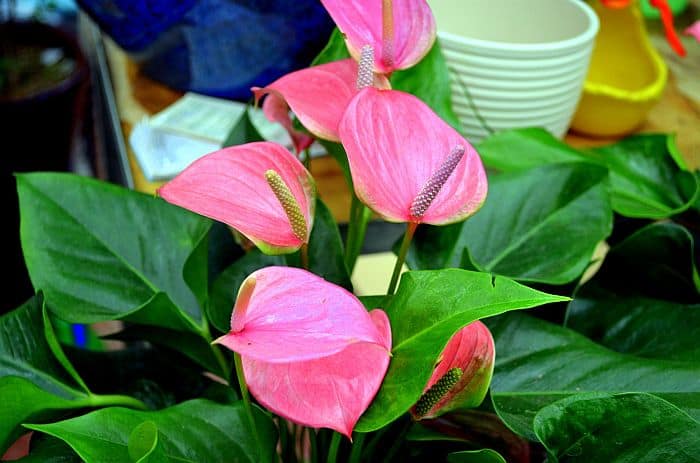
Inspect your plants regularly to catch signs of infestation mentioned above. Avoid fertilizers excessively high in nitrogen, as WallyGro says the “particularly tasty new growth” it causes can attract whiteflies. Stay on top of pruning and other maintenance.
Soil Mites
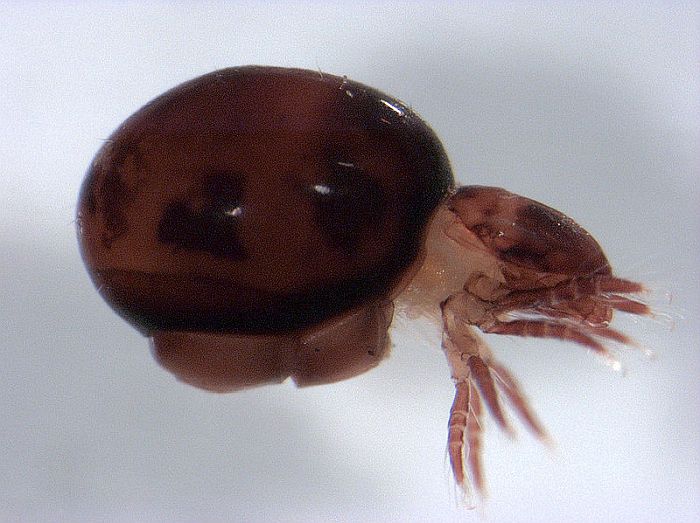
If you see tiny dots moving around in your houseplant soil, they may be soil mites. Soil mites are arthropods, closely related to spiders and ticks. Difficult to see clearly with the naked eye, they can be white, brown, or another color.
The four commonly found suborders of soil mites are Oribatei, Mesostigmata, Prostigmata, and Astigmata. Of these, Oribatei is the most common. Oribatid mites eat dead plants, dead insects, algae, fungi, and live worms. Astigmatid mites tend to be found in nitrogen-rich soil. Mesostigmatid mites mostly eat other small animals, and prostigmatid mites have varied diets.
If you find soil mites in your potting mix, they’re probably there to feed on dead organic matter, algae, fungi, dead insects, or tiny worms (not your plants). And for the most part, they aren’t harmful to people. They can, however, carry parasites, such as tapeworms.
Soil mites can actually be beneficial to plants by improving soil and eating harmful organisms. Whether or not you should get rid of them is up to you. They may leave on their own if they run out of food.
If you decide to get rid of soil mites, follow the instructions below.
You’ll Need:
- A hand trowel
- A sifting filter
- New potting soil
- An empty pot
- A workspace that’s okay to get dirty
Steps
- Remove The Potting Soil
Remove the soil from the infested pot, being careful not to damage your plant’s roots. You may want to scoop the plant out with a hand trowel. Gently set the plant aside.
- Sift The Soil
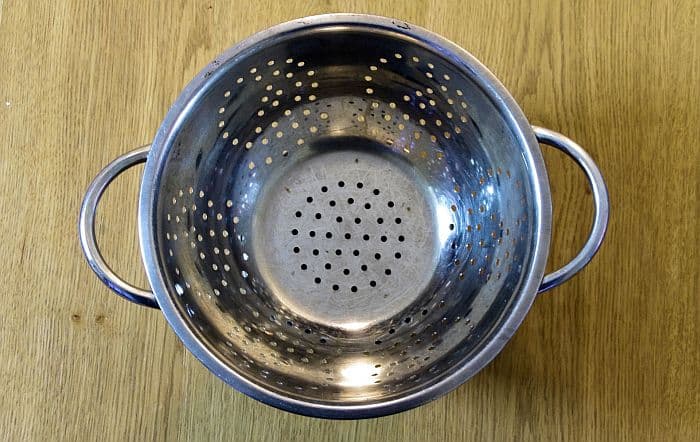
Sift the soil to remove any dead organic matter that attracted the soil mites. You can put the organic matter in a compost pile when you’re done.
- Repot The Soil
With your hand trowel, scoop the soil into a new pot.
- Leave The Newly-Filled Pot Outside
You can sterilize the soil with extreme heat. However, it’s unknown whether or not the bugs will suffer. If you leave the pot outside for a few weeks, the mites may leave in search of food.
- Fill The Old Pot With New Soil
Fill the bottom of the old pot with new soil. Then, holding your plant in the center, cover its roots with soil on all sides. Gently pat down the soil and water it.
- Prevent Future Infestations
It follows that if removing organic matter makes soil mites go away, it also prevents their presence. Discard any dead leaves or other plant parts instead of leaving them where they are. If you plan to use compost, you should probably make sure it’s finished.
Fungus Gnats
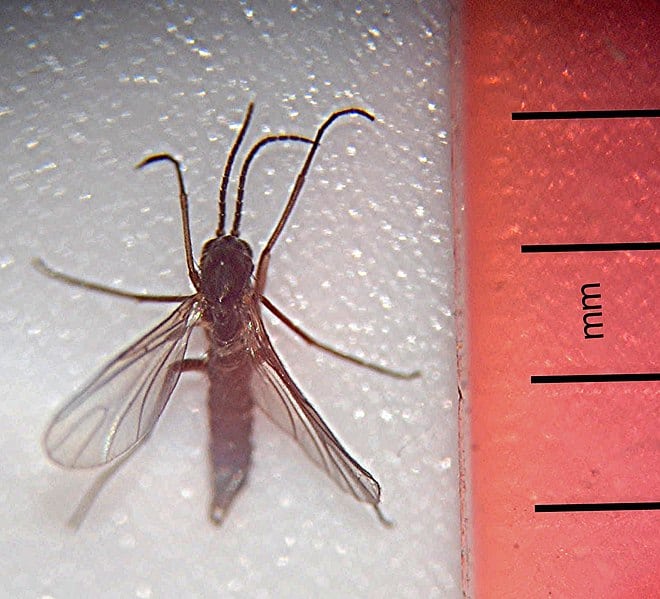
Fungus gnats are tiny insects attracted to moist potting soil. Adults are generally grayish-black with gray or transparent wings. They resemble mosquitoes.
Though harmless to humans, fungus gnats can pose a problem for plants. The adults may spread Pythium plant pathogens. And while their larvae ordinarily consume fungi and decaying plant matter, they may feast on your plant’s roots if they get overpopulated.
Plants infested with fungus gnats may wilt, lose vigor, grow poorly, develop yellow leaves, or lose leaves prematurely.
Here’s how to deal with fungus gnats:
You’ll Need:
- A new pot
- New, compost-free potting soil
- Horticultural sand
Steps
- Repot The Plant
If your potting soil is infested with fungus gnat eggs or larvae, you can give your plant a new start by repotting it. This also gives you the opportunity to improve soil drainage by choosing a better pot and adding a better-draining soil mix.
- Let The Soil Get Dry Between Waterings
According to Colorado State University Extension, the most important thing you can do to manage a fungus gnat problem is let the soil get dry between waterings. This is especially important for the top one or two inches of soil. Not only will this decrease the survival rates of eggs and larvae, but it will make the soil less attractive to egg-laying adults.
- Make A Trap
Ortho recommends filling a shallow, tuna-can-sized container with 1/4 inch of apple cider vinegar and several drops of dish soap.
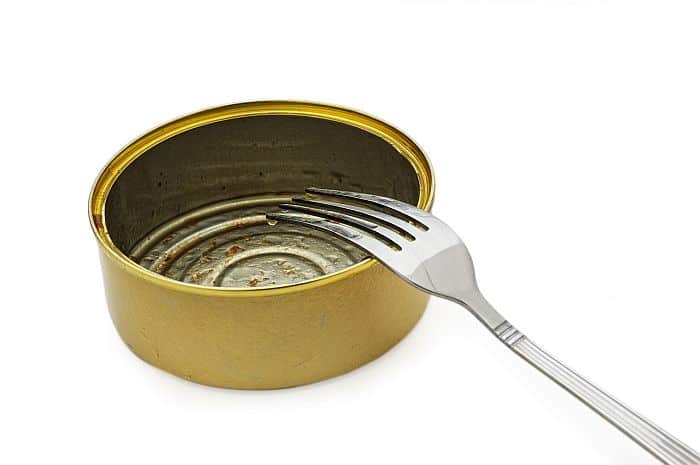
Cover the container with plastic wrap. Poke holes in the wrap that the fungus gnats can crawl through. Ortho explains that the vinegar attracts the gnats, whereas the soap “breaks the surface tension of the water,” causing them to drown.
- Spray The Adults
You can kill fungus gnats directly by spraying with something like Ortho® Home Defense® Flying Bug Killer with Essential Oils. Whatever spray you use, make sure it’s safe to use indoors and won’t harm your plant. If you intend to eat what you’re growing, it may be better to skip this step.
- Prevent Future Infestations
To prevent fungus gnat infestations, carefully inspect new plants before bringing them home. Look for tiny mosquito-like bugs, eggs, or larvae near the soil surface and signs of poor plant health. If you bring your plants outside, consider treating them before bringing them back inside.
Discard any plant debris around your plants. Let the soil get dry 1-2 inches down between waterings, and use a potting mix without composted ingredients. Adding ¼ inch of horticultural sand to your pots may prevent fungus gnats from laying eggs. Inspect your plants regularly to catch infestations early.
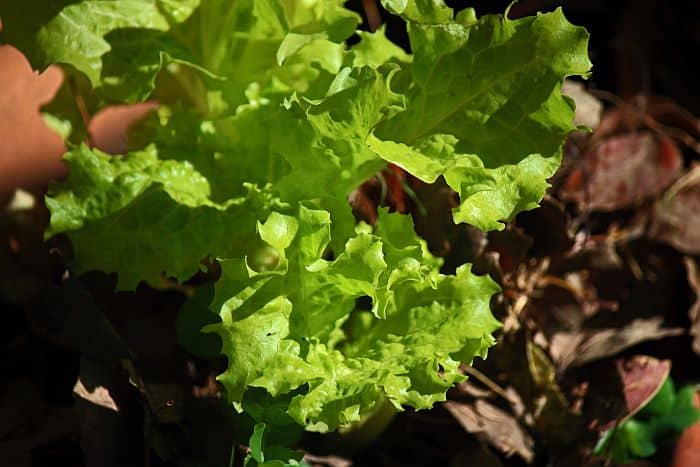
FAQs
Are White Mites Harmful To Plants?
White mites (also called spider mites) can cause significant damage to plants. Signs of their presence include leaf damage and webbing. Spider mites feed on a plant’s sap.
Can Soil Mites Spread?
According to A Green Hand, oribatid soil mites often move into containers in search of organic matter. You can encourage them to leave by removing decaying matter from your pots.
Can Hydrogen Peroxide Kill Soil Mites?
According to many sources, hydrogen peroxide can be used to control bug pests. This may mean that it can control soil mites. However, there’s no need to kill them directly when you can encourage them to leave by removing any organic matter from your pots.
Protect Your House Plants!
Whether you’re growing potatoes, mint, garlic, or something else, you now know how to keep your crop safe from tiny white bugs in soil. Remember, some bugs are harmless or even beneficial. You can get rid of harmful bugs by:
- Watering less
- Repotting
- Discarding infested plant parts
- Spraying them off with water
- Wiping off leaves
- Applying insecticidal soap or another insecticide
- Making traps
The method(s) you should use depends on the species of bug. If you have any questions, please let me know in the comments.

when I water my orchids I notice small white bugs no bigger than a pin head crawling on the bark, how can I kill them naturally without harming plant?
Im trying Dawn dish soap. I started some new maternity plants and notices little white bugs in the dirt.. so im trying 7 to 10 drops of dawn dish soap per gal of water… Cross fingers